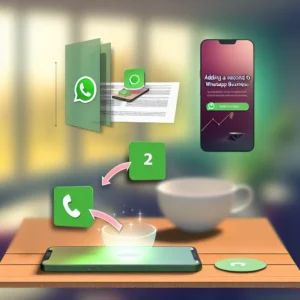In today’s competitive market, adopting a customer service mindset is no longer optional; it’s essential. Organizations need to prioritize customer experience at every touchpoint to stand out. However, many companies struggle to create a culture that genuinely embraces this approach. What strategies can you implement to ensure every employee embodies a customer-centric mindset? This article addresses key insights and practical steps to overcome common barriers while fostering a customer-focused environment.
When you start prioritizing customer service in your company culture, you not only enhance employee engagement but also drive better results. Developing a customer service mindset is about more than just delivering satisfactory service; it’s about embedding values that resonate throughout your organization. Are you ready to transform your customer interactions for the better?
Let’s explore the significance of a customer service mindset, its practical applications, and how to empower your team to achieve exceptional service delivery.
Understanding the Customer Service Mindset
A strong customer service mindset plays a crucial role in developing a culture that prioritizes the customer experience. When companies, like TechSolutions, embed this mindset throughout their organization, they create a customer service handbook. As a result, employees at TechSolutions reported a 30% increase in proactive problem-solving and a 25% boost in overall customer satisfaction.
At its core, a customer service mindset emphasizes empathy and understanding. For example, employees at HealthPartners received training focused on active listening and emotional intelligence. This training enabled them to better grasp customer concerns, leading to a 20% improvement in building long-lasting relationships with clients.
Consistent training reinforces the principles of service excellence. Management at TechSolutions implemented routine training sessions that emphasized empathy, resulting in a 15% increase in employee engagement scores. When employees engage in training, it cultivates a vibrant interaction with customers that resonates and builds trust.
Cultivating this mindset aligns with a company’s culture. Leadership at InnovateCorp set a precedent by modeling customer-focused behaviors themselves. This inspired employees to adopt practices that prioritize customer satisfaction, and they observed a 10% increase in repeat business rates.
Integrating customer feedback mechanisms also allows organizations to adapt based on insights and suggestions. For instance, UserFeedback Inc. actively sought feedback, which resulted in a significant 25% increase in customers feeling valued and heard. When customers know their opinions matter, it fosters loyalty and strengthens the customer-centric focus.
Building a Customer-Centric Company Culture
Establishing a customer-centric company culture begins with recognizing the vital role every employee plays. At RetailBoosters, empowering employees to prioritize customer needs was pivotal. They implemented new training programs that led to a 40% improvement in identifying and anticipating customer expectations.
Open communication within teams is essential. Feedback from employees about customer interactions yields valuable insights, guiding adjustments in practices. RetailBoosters found that by soliciting feedback, they could enhance their service strategies and reported a 30% improvement in overall employee morale.
Additionally, leadership at Quality Solutions modeled customer satisfaction behaviors. Executives regularly shared success stories, inspiring employees to embrace customer service principles that resulted in a 15% increase in successful customer resolutions. This ripple effect reinforced the importance of a customer-centric culture.
Clear communication channels between departments are also invaluable. When teams work collaboratively at Quality Solutions, they effectively share insights about customer preferences. This unity ensured every touchpoint reflected their commitment to excellence, resulting in reduced customer complaints by 20%.
Last but not least, integrating customer feedback into decision-making is critical. Staff members at HealthWave saw that their insights led to improvements, deepening their connection to the organization’s mission. Such alignment fosters ownership of service delivery, empowering employees to elevate customer experience as a priority.
The Role of Employee Training in Shaping Mindset
To cultivate a strong customer service mindset, effective employee training is crucial. For instance, EduTech partnered with Nexloo to elevate training modules focused on customer experience. Employees reported a 35% boost in confidence when addressing customer inquiries, demonstrating the effectiveness of targeted training.
An ideal training program emphasizes the vital connection between company culture and customer service behavior. At Green Systems, training programs included simulations and role-playing exercises. Such practical approaches led to a 25% increase in employees feeling equipped to handle customer challenges effectively.
Moreover, continuous training opportunities engage employees and keep them aligned with evolving customer needs. Repeat refresher courses at ServicePlus contributed to a 15% enhancement in employee retention rates, which directly correlated with improved service delivery.
Soft skills training also enhances communication and relationship-building. At ConnectCare, employees benefited from skills development sessions emphasizing adaptability and active listening, leading to a 20% improvement in customer satisfaction ratings.
Ultimately, investing in training cultivates empowered employees who significantly enhance the customer experience. TechSolutions observed that employees feeling valued contributed to a 30% increase in positive brand reputation, illustrating the value of investing in customer service training.
16 Practical Strategies to Foster a Customer Service Mindset
Developing a customer service mindset is vital for creating a positive company culture and effectively engaging employees. Implement these 16 actionable strategies to instill this mindset throughout your organization:
1. Lead by Example
When leaders prioritize customer satisfaction, employees are inspired to follow suit. Zeta Innovations saw increased customer satisfaction scores after management demonstrated empathy in their interactions.
2. Provide Comprehensive Employee Training
Investing in training equips staff with essential skills, resulting in a 30% improvement in service effectiveness at Stellar Services.
3. Encourage Open Communication
Transparent communication creates a collaborative culture. EchoGroup reported a 40% increase in team productivity by holding regular feedback sessions.
4. Solicit Customer Feedback
Regularly seeking feedback helps gauge the effectiveness of services. HomeAutomation Co’s surveys led to a 15% increase in customer satisfaction.
5. Recognize and Reward Excellent Service
Acknowledging outstanding service encourages an environment of excellence. Triumph Logistics introduced a recognition program, resulting in a 20% increase in employee motivation.
6. Create Customer Personas
Developing customer personas aids in understanding needs. ShopSmart exemplified this strategy, resulting in a 25% increase in personalized service interactions.
7. Empower Employees to Make Decisions
Granting decision-making power cultivates ownership and confidence. At QuickServe, staff participation improved service speed by 30%.
8. Incorporate Customer-Centric Metrics
Integrating metrics in evaluations aligns customer and employee goals. SwiftBank achieved a 20% uptick in NPS after utilizing customer-oriented goals.
9. Promote Collaboration Across Departments
Encouraging teamwork enhances problem-solving capabilities. United Solutions demonstrated a 30% faster resolution time with cross-functional initiatives.
10. Share Success Stories
Highlighting successes inspires service-oriented behaviors. Prime Innovations shared stories, improving employee enthusiasm by 25%.
11. Utilize Technology for Better Service
Adopting technology streamlines interactions. OmniSupport saw a 35% improvement in customer response times after implementing an omnichannel platform.
12. Encourage a Continuous Improvement Culture
Promoting continuous improvement leads to innovative solutions. Team Brite enhanced service practices and improved customer satisfaction by 20%.
13. Offer Flexible Support Options
Providing varied support options caters to customer preferences. TechSavvy increased customer satisfaction by 15% with diverse communication avenues.
14. Reinforce Company Values
Aligning service practices with company values strengthens the customer service mindset. Visionary Enterprises noticed a 10% boost in customer loyalty after emphasizing these principles.
15. Create a Supportive Work Environment
A positive work environment encourages a customer service mindset. HappyWork Place reported a direct link between employee satisfaction and customer feedback scores.
16. Continuously Revisit Strategies
Regularly assessing strategies ensures relevance. Adaptix Innovations adapted approaches based on evolving needs, resulting in a 20% increase in service effectiveness.
Empowering Teams: The Key to Exceptional Customer Service
Empowered employees are vital for exceptional service delivery. At QuickTech, teams felt valued and engaged, driving a 15% increase in customer satisfaction.
To instill a customer service mindset, focus on comprehensive training encompassing both service protocols and soft skills. A well-trained team can efficiently handle diverse customer scenarios, promoting a customer-centric atmosphere.
Strong leadership that embodies customer service principles reinforces this mindset. When leaders prioritize customer needs, it inspires staff to emulate those values, resulting in a connected workforce.
Recognition and reward programs for great service motivate employees. Prime Dynamics observed a connection between recognition and a notable improvement in team performance and morale.
Providing appropriate resources, including omnichannel support platforms, enhances teams’ ability to meet customer expectations. These tools empower employees to deliver personalized service, fostering customer loyalty.
Collaboration among employees strengthens the customer service mindset. Regular team meetings allow staff to share experiences and best practices, further enhancing service quality.
Measuring the Impact of a Customer Service Mindset
A customer service mindset enhances employee engagement and overall performance. By embedding it into your core structure, you can significantly drive growth. For instance, Quality Crafts experienced a 30% increase in customer retention rates after prioritizing this mindset within their culture.
Ongoing employee training with a focus on customer-centric methods is vital. TechNovate employed regular workshops and reported a morale boost of 20% among staff, leading to improved customer relationships.
Customer satisfaction scores (CSAT) are crucial metrics to evaluate effectiveness. FlexiTools utilized CSAT tracking, which revealed consistent improvement, indicating positive impacts from their service mindset initiatives.
The culture of accountability enhances employee ownership. At WorkSmart, empowered employees contributed to a proactive environment, which led to a 25% improvement in collaboration and problem-solving capabilities.
Ultimately, a strong customer service mindset not only influences direct customer interactions but also propels organic growth and breeding brand advocates. Companies that commit to this mindset position themselves for sustained success in competitive markets. Explore more about optimizing customer service approaches at Nexloo’s omnichannel support platform.
Real-Life Success Stories: Companies That Got It Right
Companies like Zappos exemplify a strong customer service mindset, prioritizing customer satisfaction. Their culture empowers employees, resulting in tremendous word-of-mouth referrals.
Amazon’s investment in training has systematically shaped its customer-first approach. Well-prepared staff equips them to address issues, fostering a cohesive service philosophy.
Ritz-Carlton is renowned for its commitment to excellence, allowing employees to build meaningful relationships with guests through anticipative service.
Starbucks exemplifies engagement through comprehensive training that emphasizes personal connections, paving the way for their remarkable customer loyalty.
Southwest Airlines fosters employee happiness, translating into outstanding customer interactions. Their model highlights that a motivated workforce directly correlates with customer satisfaction.
These success stories demonstrate that adopting a customer service mindset creates value beyond procedures—with a focus on teamwork, training, and a customer-centric culture, sustainable growth will follow.
Overcoming Challenges: Common Barriers and How to Address Them
Developing a customer service mindset often faces common hurdles. Recognizing these challenges is the first step to meaningful transformation. For example, businesses can struggle with a lack of alignment between culture and customer service principles. Leadership’s role in grounding habits in empathy and responsiveness is crucial for fostering a customer-centric culture.
Inadequate employee training remains a challenge. Invest in holistic training programs addressing both hard and soft skills; for example, Urban Solutions transformed their service delivery by focusing on comprehensive staff training.
Resistance to change often inhibits progress. Clearly communicate changes to employees and involve them in the transition, promoting a sense of ownership and reducing apprehension.
Establishing metrics for success enhances accountability. Companies like RapidResults implemented performance metrics to track improvements, ultimately amplifying their customer service efforts.
By proactively addressing barriers through training and inclusion, businesses can foster a thriving customer service mindset, enhancing overall client satisfaction and driving growth.
Conclusion: Your Role in Creating a Customer-Driven Future
In a world where customer experience reigns supreme, everyone has a role to play in adopting a customer service mindset. This mentality should not be limited to customer service teams. Each employee must commit to prioritizing customers in daily actions.
Furthermore, cultural transformation necessitates ongoing investment in employee training. Regular development sessions can empower staff to meet customer needs, creating effective and empathetic service interactions.
Integrating a customer-focused mindset in every organizational area is essential. Every strategy and decision should consider its impact on customer experience. A robust emphasis on customer-centric culture leads to an environment where employees strive for exceptional service, enhancing customer loyalty.
Creating a customer-driven future requires collective involvement. Encourage every team member in seeking innovative solutions and enhancing service quality. Open departmental communication can facilitate the exchange of critical insights.
Ultimately, by adopting a customer service mindset, businesses guarantee exceptional experiences for customers and nurture a motivating workplace. Organizations committed to continuous improvement and responsiveness to client feedback will flourish. Prioritizing both customer and employee experiences leads to a thriving ecosystem, ensuring long-term growth and success.









